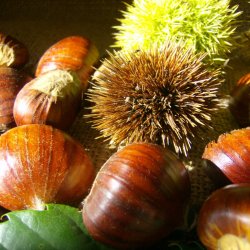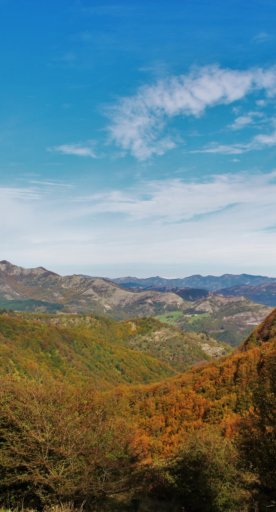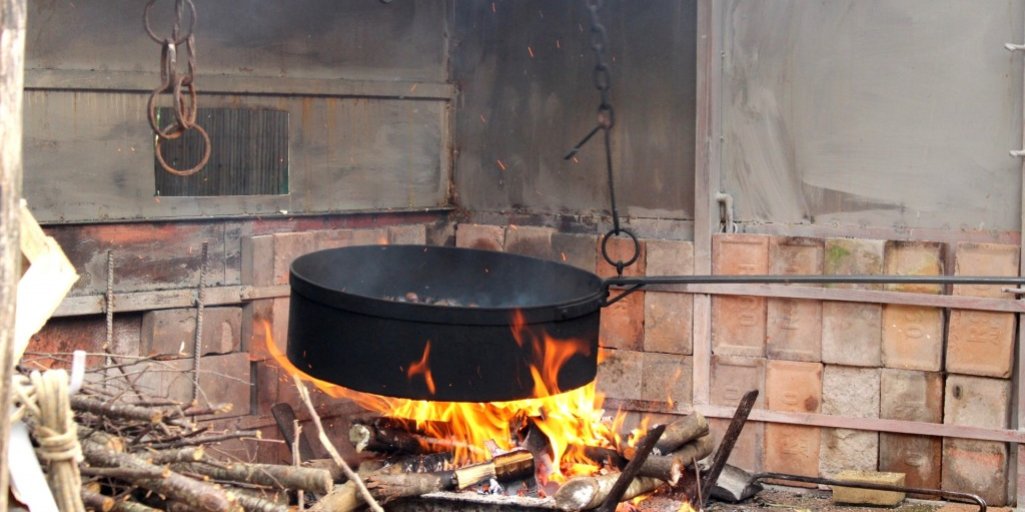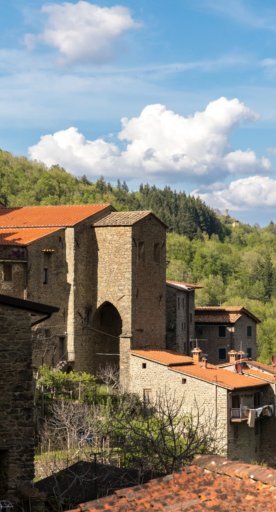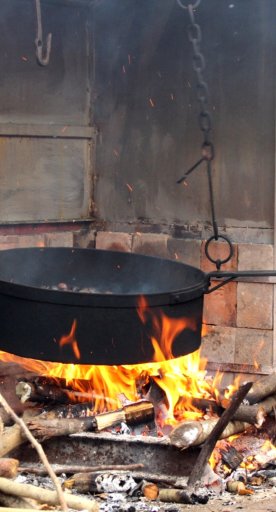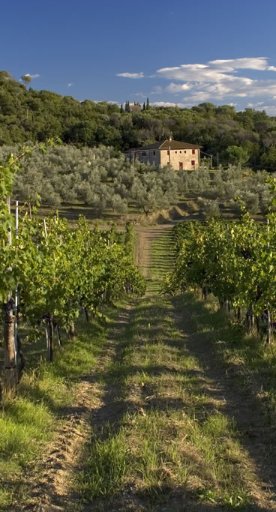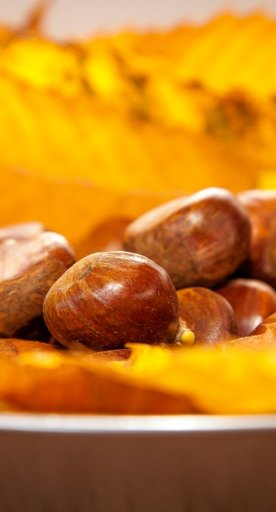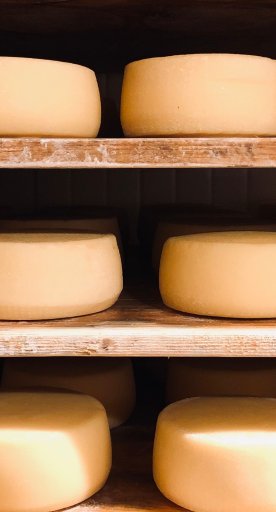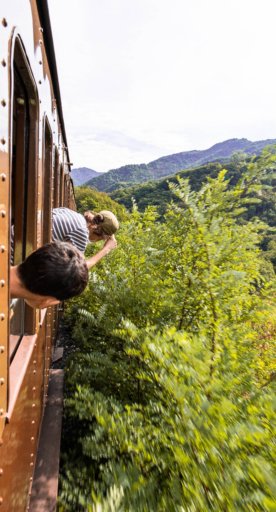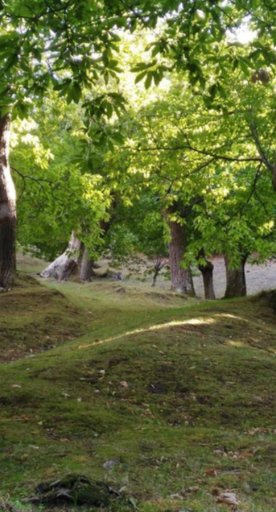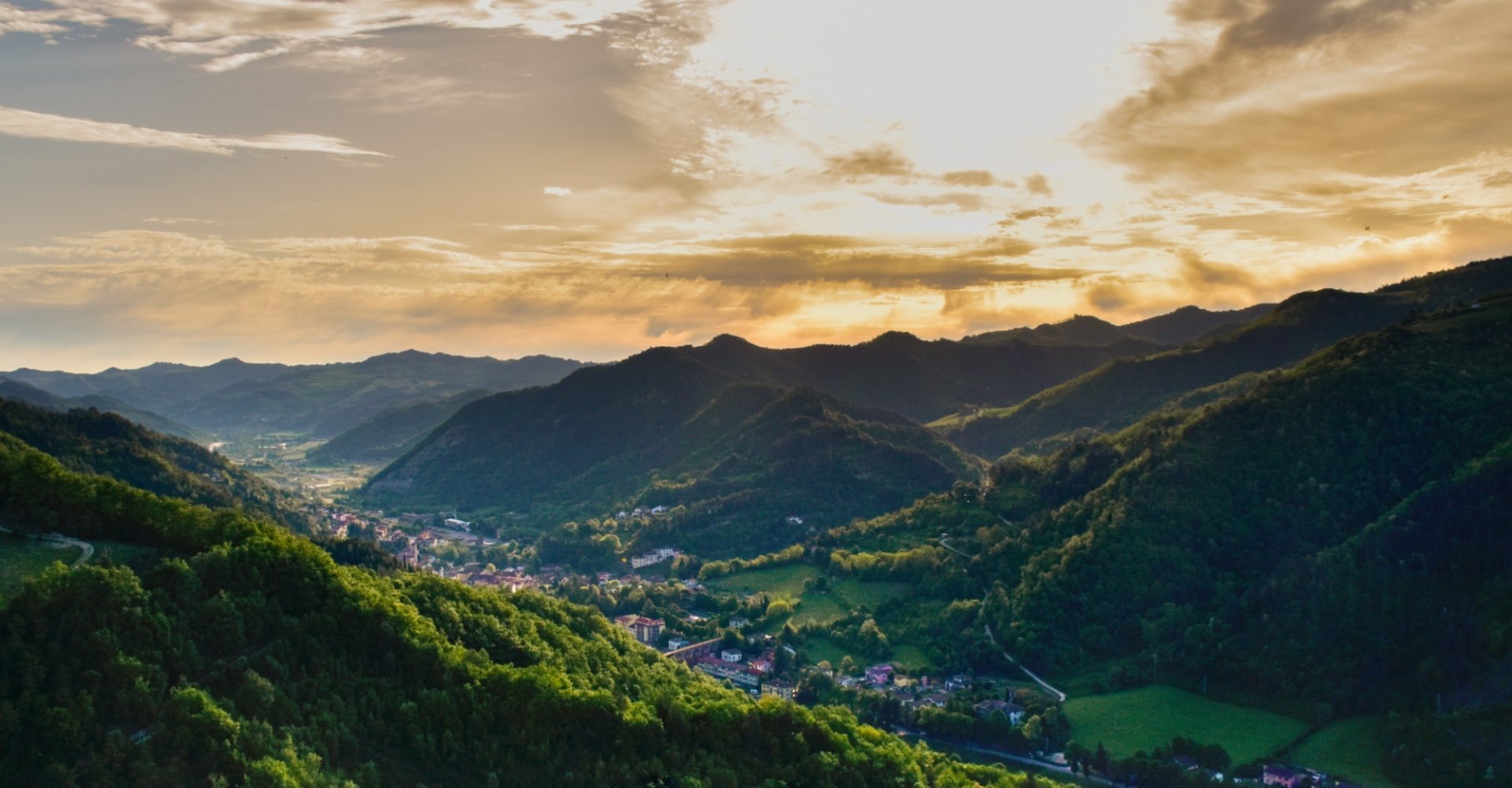
Marradi
The amazing border between Tuscany and Romagna, the birthplace of the poet Dino Campana
Marradi has always been a place of passage, partly due to the particularity of its position and its unique characteristics as a mountain town. Despite being in the province of Florence, it's crossed by the Lamone river which flows into Ravenna, in Emilia Romagna.
Surrounded by lush nature, it's also famous for its chestnuts that are celebrated every autumn during a famous festival.
The intensity of the bright and varied colors make it different from all the other towns in the Tuscan-Romagnolo Apennines. Its uniqueness also lies in its many noble palazzi in the center, a veritable theater where culture and tradition coexist with quality artisan productions. The town actively promotes sustainable tourism, as certified by the Slow city label.
What to see in Marradi
It just takes looking around to realize the uniqueness of this place. Instead of the chalets and low houses typical of the Apennine villages, here you will find yourself surrounded by avenues and stately buildings. These features are due to the choices of families who moved here from the cities who did not want to give up the elegance of the historic buildings.
Palazzo Torriani from the 16th century is clear evidence of this. The interior preserves splendid decorations by Galileo Chini and a painting by Silvestro Lega.
The heart of the historic center is the enchanting Piazza le Scalelle, overlooked by the Town Hall, Palazzo Fabroni and the Church of the Suffrage. The eighteenth-century Teatro degli Animosi and San Lorenzo Church are also worth a visit. The latter preserves remarkable fifth-century paintings by the Master of Marradi, an anonymous painter who trained with Domenico Ghirlandaio.
For poetry lovers, remember that Dino Campana was born and lived in Marradi. The author of I Canti Orfici is remembered in the headquarters of the Cultural Center dedicated to him.
It just takes looking around to realize the uniqueness of this place. Instead of the chalets and low houses typical of the Apennine villages, here you will find yourself surrounded by avenues and stately buildings. These features are due to the choices of families who moved here from the cities who did not want to give up the elegance of the historic buildings.
Palazzo Torriani from the 16th century is clear evidence of this. The interior preserves splendid decorations by Galileo Chini and a painting by Silvestro Lega.
The heart of the historic center is the enchanting Piazza le Scalelle, overlooked by the Town Hall, Palazzo Fabroni and the Church of the Suffrage. The eighteenth-century Teatro degli Animosi and San Lorenzo Church are also worth a visit. The latter preserves remarkable fifth-century paintings by the Master of Marradi, an anonymous painter who trained with Domenico Ghirlandaio.
For poetry lovers, remember that Dino Campana was born and lived in Marradi. The author of I Canti Orfici is remembered in the headquarters of the Cultural Center dedicated to him.
What's nearby
Once in these parts, it's impossible to resist a trip to the woods that surround the town. The territory of Marradi is an ideal destination for those who love trekking and mountain biking.
A fascinating and little known route crosses the Tuscan-Emilian Apennines, starting from the town of Marradi and arriving at the Hermitage of Gamogna, an ancient monastic complex.
Don't miss an excursion to the Acquacheta waterfall, an intriguing itinerary through the woods and nature of Tuscany.
13 km from Marradi you can admire the town of Palazzuolo sul Senio, considered one of the most beautiful villages in Italy.
Once in these parts, it's impossible to resist a trip to the woods that surround the town. The territory of Marradi is an ideal destination for those who love trekking and mountain biking.
A fascinating and little known route crosses the Tuscan-Emilian Apennines, starting from the town of Marradi and arriving at the Hermitage of Gamogna, an ancient monastic complex.
Don't miss an excursion to the Acquacheta waterfall, an intriguing itinerary through the woods and nature of Tuscany.
13 km from Marradi you can admire the town of Palazzuolo sul Senio, considered one of the most beautiful villages in Italy.
Events
Every Sunday in October, Marradi celebrates the fruits of autumn with its famous chestnut and marron glacés festival. Annually, a great celebration is held: from burnt, that is, roasted chestnuts, to tortelli and chestnut cake, chestnut jam and marrons glacés.
In fact, many arrive in the area aboard a steam train that connects it to Florence and Faenza, passing through the Tuscan-Romagnolo Apennines.
Every Sunday in October, Marradi celebrates the fruits of autumn with its famous chestnut and marron glacés festival. Annually, a great celebration is held: from burnt, that is, roasted chestnuts, to tortelli and chestnut cake, chestnut jam and marrons glacés.
In fact, many arrive in the area aboard a steam train that connects it to Florence and Faenza, passing through the Tuscan-Romagnolo Apennines.
Typical products
Marradi offers a range of typical dishes that are unique to the area, such as ravioli with ricotta and spinach, tagliatelle with truffles, cappelletti with stracchino and raveggiolo, grilled game and mutton, ricotta and, in autumn, desserts based on the Mugello IGP chestnuts.
Marradi offers a range of typical dishes that are unique to the area, such as ravioli with ricotta and spinach, tagliatelle with truffles, cappelletti with stracchino and raveggiolo, grilled game and mutton, ricotta and, in autumn, desserts based on the Mugello IGP chestnuts.
